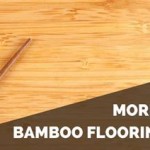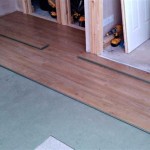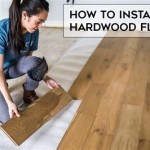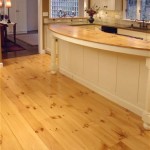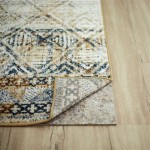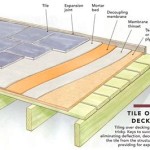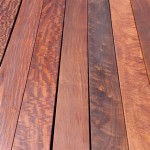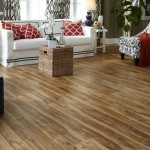What Are The Pros And Cons of Luxury Vinyl Flooring?
Luxury Vinyl Flooring (LVF) has emerged as a popular flooring option for both residential and commercial spaces. Its appeal stems from its realistic appearance, durability, and relatively affordable cost compared to natural materials like hardwood or stone. LVF is an umbrella term encompassing Luxury Vinyl Plank (LVP) and Luxury Vinyl Tile (LVT), both constructed with multiple layers that contribute to their performance. While LVF offers numerous advantages, it's crucial to understand its limitations before making a purchasing decision. This article will delve into the pros and cons of luxury vinyl flooring to provide a comprehensive overview.
Cost-Effectiveness and Installation
One of the most significant advantages of luxury vinyl flooring is its cost-effectiveness. Compared to hardwood, ceramic tile, or natural stone, LVF generally has a lower initial purchase price. This makes it an attractive option for homeowners on a budget or for large-scale commercial projects where flooring costs can quickly escalate.
The installation process for LVF is also generally simpler and less expensive than that of many other flooring materials. Many LVF products are designed for DIY installation with click-lock or glue-down methods. Click-lock systems are particularly user-friendly, allowing planks or tiles to be easily connected without adhesives. Glue-down installations, while requiring more expertise, can provide a more permanent and stable flooring solution. The ease of installation translates to lower labor costs if professional installation is required, further contributing to the overall cost savings.
Furthermore, LVF can often be installed directly over existing subfloors, provided the subfloor is level, clean, and dry. This eliminates the need for costly subfloor preparation or removal of existing flooring, saving both time and money. Some LVF products even have built-in underlayment, adding extra cushioning and sound insulation without the need for a separate underlayment layer.
However, it's important to note that the cost of LVF can vary depending on the quality, thickness, and features of the product. Higher-end LVF with thicker wear layers and more realistic designs will typically be more expensive. Installation costs can also vary depending on the complexity of the project and the expertise of the installer. While generally more affordable than other flooring options, it’s vital to compare different LVF products and obtain quotes from multiple installers to ensure the best value.
Durability and Maintenance
Luxury vinyl flooring is renowned for its exceptional durability, making it a suitable choice for high-traffic areas in both residential and commercial settings. The multi-layered construction of LVF contributes to its resilience against scratches, dents, and stains. The wear layer, typically made of a clear, protective coating, is the first line of defense against daily wear and tear. The thickness of the wear layer is a critical factor in determining the durability of the flooring; thicker wear layers provide greater protection and a longer lifespan.
LVF is also highly resistant to water and moisture, making it an ideal choice for kitchens, bathrooms, and laundry rooms. Unlike hardwood, which can warp or rot when exposed to moisture, LVF is impervious to water damage and can withstand spills and splashes without becoming damaged. This water resistance also makes LVF a suitable option for basements, where moisture levels can be higher.
The maintenance requirements for LVF are minimal, contributing to its long-term cost-effectiveness. Regular sweeping or vacuuming is sufficient to remove dirt and debris. For more thorough cleaning, a damp mop with a mild detergent can be used. Unlike hardwood, LVF does not require waxing, polishing, or refinishing, saving time and money on maintenance.
Despite its durability, LVF is not indestructible. Sharp objects can still scratch the surface, and heavy furniture can cause dents. It's advisable to use furniture pads under heavy objects to protect the flooring from damage. Additionally, while LVF is water-resistant, it's important to clean up spills promptly to prevent staining or damage to the seams between planks or tiles. Prolonged exposure to standing water can lead to mold or mildew growth if the subfloor is not properly sealed.
Aesthetics and Design Versatility
Luxury vinyl flooring offers a wide range of aesthetic options, mimicking the look of natural materials such as hardwood, stone, and tile with remarkable realism. Advanced printing technology allows manufacturers to create LVF with intricate textures, grains, and patterns that closely resemble the natural look of these materials. This enables homeowners and businesses to achieve the desired aesthetic without the high cost and maintenance requirements of natural materials.
LVF is available in a variety of sizes, shapes, and colors, providing endless design possibilities. Luxury vinyl plank (LVP) replicates the look of hardwood flooring, available in various widths, lengths, and wood species. Luxury vinyl tile (LVT) mimics the appearance of ceramic tile or stone, offering a range of sizes and designs, including patterns like marble, slate, and travertine. The versatility of LVF makes it easy to customize the flooring to complement any interior design style.
Furthermore, LVF can be installed in various patterns, such as herringbone, chevron, or brick, adding visual interest and sophistication to the space. The ability to mix and match different colors and patterns of LVF allows for unique and personalized flooring designs. The design flexibility of LVF makes it an appealing choice for homeowners and businesses seeking to create a custom look that reflects their individual style.
While LVF can closely resemble natural materials, it's important to acknowledge that it is still a synthetic product. Some individuals may perceive the look and feel of LVF as less authentic than natural hardwood or stone. The texture of LVF can also feel different than natural materials, although some higher-end LVF products incorporate embossed textures that more closely mimic the feel of wood or stone. Ultimately, the acceptance of the aesthetic of LVF is subjective.
Environmental Considerations
The environmental impact of luxury vinyl flooring is a factor that warrants careful consideration. LVF is typically made from polyvinyl chloride (PVC), a synthetic plastic polymer. The production of PVC can involve the use of potentially harmful chemicals, and the disposal of PVC products can contribute to environmental pollution.
However, advancements in manufacturing processes have led to the development of more environmentally friendly LVF options. Some manufacturers are now using recycled materials in the production of LVF, reducing the reliance on virgin PVC. Additionally, some LVF products are certified by third-party organizations, such as FloorScore, which indicates that the product meets stringent standards for indoor air quality and low VOC emissions.
The durability and long lifespan of LVF can also contribute to its environmental sustainability. By choosing a durable and long-lasting flooring material, homeowners and businesses can reduce the need for frequent replacement, minimizing waste and resource consumption. The low maintenance requirements of LVF also reduce the use of harsh cleaning chemicals, further lessening its environmental impact.
It's important to research the environmental certifications and manufacturing practices of LVF products before making a purchase. Look for products with recycled content, low VOC emissions, and certifications from reputable organizations. Consider the end-of-life disposal options for LVF; while PVC is not biodegradable, some recycling programs accept PVC flooring. By making informed choices, consumers can minimize the environmental footprint of their flooring selection.
Comfort and Sound Insulation
Luxury vinyl flooring provides a degree of comfort underfoot compared to harder flooring materials such as tile or concrete. The elasticity of the vinyl material offers a slight cushioning effect, making it more comfortable to stand or walk on for extended periods. This can be particularly beneficial in kitchens, bathrooms, or other areas where people spend a significant amount of time standing.
Some LVF products also incorporate a layer of foam or cork underlayment, further enhancing the cushioning and comfort. This underlayment can also provide additional sound insulation, reducing noise transmission between floors. This can be particularly important in multi-story homes or apartments, where noise reduction is a priority.
The sound insulation properties of LVF can also help to create a quieter and more peaceful environment within a room. The material can absorb sound waves, reducing echoes and reverberations. This can be beneficial in home theaters, bedrooms, or other areas where a quiet atmosphere is desired.
However, it's important to note that the comfort and sound insulation properties of LVF can vary depending on the thickness and construction of the product. Thicker LVF with a built-in underlayment will generally provide greater comfort and sound insulation than thinner LVF without an underlayment. It's advisable to compare the specifications of different LVF products to determine the level of comfort and sound insulation they offer.
Repair and Replacement
One of the advantages of luxury vinyl flooring is the relative ease of repair and replacement. If a plank or tile is damaged, it can often be replaced without having to replace the entire floor. This is particularly true for click-lock LVF, where individual planks or tiles can be easily removed and replaced.
For glue-down LVF, the replacement process is more involved, requiring careful removal of the damaged section and re-gluing of the replacement piece. However, even with glue-down LVF, spot repairs are generally possible, avoiding the need for a complete floor replacement.
Having extra planks or tiles on hand after the initial installation is advisable to ensure a seamless repair. This allows for a perfect color and pattern match when replacing damaged sections. If replacement planks or tiles are not available, it may be necessary to source them from the same manufacturer and batch to ensure a consistent appearance.
While individual planks or tiles can be replaced, significant damage to the subfloor may necessitate a more extensive repair or even a complete floor replacement. It's important to address any underlying moisture issues or structural problems before installing new LVF to prevent future damage.
Pros And Cons Of Luxury Vinyl Flooring In Basements

Luxury Vinyl Flooring Pros And Cons I Never Thought We D Do This To Our Main Floor Diy Life

Luxury Vinyl Vs Laminate Flooring Pros And Cons The We Chose Angela Marie Made

Luxury Vinyl Flooring 101 50floor

Luxury Vinyl Flooring Pros And Cons I Never Thought We D Do This To Our Main Floor Diy Life

Luxury Vinyl Vs Laminate Flooring Pros And Cons The We Chose Angela Marie Made

Pros Cons Of Luxury Vinyl Plank Lvp Lx Hausys

10 Pros And 6 Cons Of Luxury Vinyl Flooring In Kitchens Direct Blog

The Pros And Cons Of Lvp In Bathrooms

Vinyl Plank Flooring Vs Laminate Porcelain Linoleum Pros Cons Of Luxury Tile Wood
See Also
